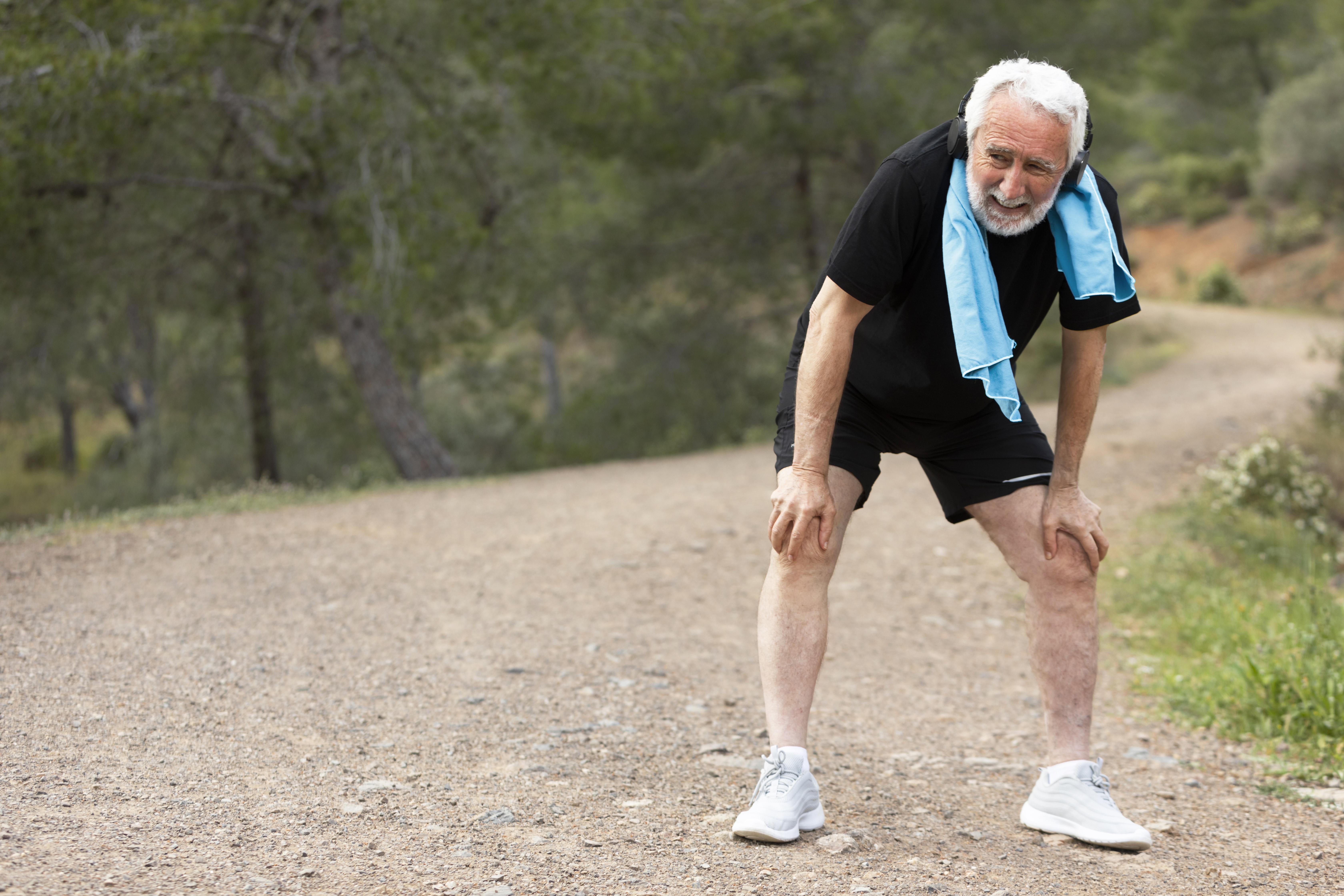-compressed.jpg?alt=media&token=9a40a36e-83b5-4e62-9667-2a2912e01643)
A vivid, digital visualization of a human knee joint, highlighting bones and cartilage in neon colors.
As you age, your bones and muscles tend to degenerate. Conditions like arthritis, spondylitis, back pain, and slipped discs are becoming increasingly common, especially in youth. A Sedentary Lifestyle, Poor Posture, Unhealthy Eating Habits, and no physical activity are some of the primary reasons for these rising problems.
It even becomes challenging to perform daily activities like climbing stairs, long walks, sitting for a long duration, etc. The pain in joints becomes unbearable over time.
But with advanced technology and the best orthopedic doctors, you can tackle all these issues with very little hassle. Here we are going to learn about 5 warning signs that might be telling you about your orthopedic issues.
If you are suffering from consistent pain in your joints, including hips, knees, shoulders, or other areas, you might have orthopedic conditions such as arthritis, cartilage wear, repetitive stress, etc. The pain caused by these conditions usually doesn’t go away with rest or medication; you might need to consult an orthopedic surgeon for a proper checkup and relief.
There can be instances when you feel like there’s stiffness in your joint areas. You might feel like you can’t bend your knee, rotate your shoulder, or stretch your hips beyond a certain point. This lack of motion and stiffness can be related to conditions like frozen shoulder, joint inflammation, or even tendon issues.
If you are feeling swellness in your joints, have visible puffiness around certain areas, or even feel warmth, it might mean that you have certain orthopedic issues. These conditions usually occur in areas like ankles, knees, and wrists. The reason behind these issues might be an injury, possible gout, or even bursitis.
If you are an athlete, elderly, or have osteoporosis and suffer from recurring sprains, frequent fractures, or dislocations? If yes, then you might be suffering from orthopedic issues like weak bones, ligament damage, or instability. These issues usually occur due to poor diet, lack of exercise, or a sedentary lifestyle.
If you are having problems in doing your daily activities like walking, standing still, or climbing stairs, it might be due to orthopedic issues common in elderly people. These issues are usually temporary, but if it get serious, you might start having interference in your independence of work. These issues occur due to joint degeneration or chronic orthopedic conditions.

An athlete experiencing knee pain after physical activity, indicating possible strain or injury.
Suffering from any of the above conditions and hoping to get better with time and medication might not be the best idea in the long run. Serious orthopedic conditions like these usually don’t get better with rest and time. You need proper care and regular checkups from professional orthopedic doctors.
You can consider timely consultations, take advantage of advanced diagnostic tools like X-rays and MRIs. The earlier you get your orthopedic issue checked and resolved, the sooner you can get back to your normal life and mobility.
When it comes to maintaining bone and joint health, there are several activities and lifestyle changes you can consider for better skeletal health. Make sure you are focusing on these simple lifestyle changes:
Maintaining proper posture throughout the day
Exercising regularly
Having a calcium-rich diet
Avoiding high-impact activities.
Bone and joint health is quite important nowadays, as people usually avoid a proper diet and a healthy lifestyle. This can affect your bone density and flexibility significantly and might make you prone to injuries and other recurring orthopedic issues. So, make sure to carefully read all the signs mentioned above, as they might help you avoid any possible risks to your bones or even help you realise your current orthopedic condition.
Answer: Early signs often include persistent joint pain, stiffness after resting, swelling, or reduced range of motion. Even mild discomfort that occurs frequently or limits daily activities can be an early indicator and shouldn’t be ignored.
Answer: If joint pain lasts more than a week, recurs regularly, or worsens with time, it's best to consult an orthopedic specialist. Early intervention can prevent the condition from progressing and reduce long-term damage.
Answer: Not always, but they are often caused by nerve compression due to orthopedic conditions like herniated discs, carpal tunnel syndrome, or spinal stenosis. A proper diagnosis is essential to determine the exact cause.
Answer: Yes, orthopedic problems can affect all age groups. Young people can suffer from sports injuries, posture-related issues, or congenital conditions that may lead to long-term orthopedic concerns if untreated.
Answer: No, many orthopedic issues can be managed with physical therapy, medications, lifestyle changes, or injections. Surgery is considered only when non-surgical options fail or the condition is severe.
We offer expert care across key specialties, including Medicine, Cardiology, Orthopaedics, ENT, Gynaecology, and more—delivering trusted treatment under one roof.
Prakash Hospital Pvt. Ltd. is a 100 bedded NABH NABL accredited multispecialty hospital along with a center of trauma and orthopedics. We are in the service of society since 2001.
OUR SPECIALITIES
Contact Us
D – 12A, 12B, Sector-33, G. B. Nagar, Noida, Uttar Pradesh 201301
+91-8826000033

© 2025 All rights reserved.
Designed and Developed by Zarle Infotech